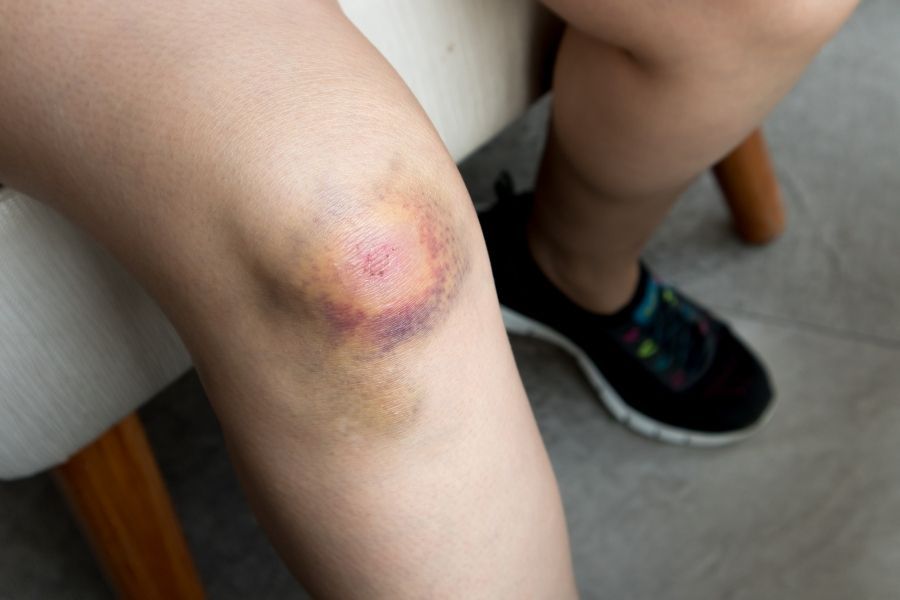
Cuts and bruises are common injuries that usually can be treated at home without needing to see a doctor.
Cuts are caused by sharp objects piercing the skin and are normally accompanied by bleeding, depending on how deep the cut is. Bruises result from hard contact with an object or a person. The force causes an injury to the tissue below the skin, leading to bleeding under the skin and it appears as a bruise. Bruises change in color from red, to blue or purple after a few hours, then turn yellow before they finally fade off.
What you can do
Treating Cuts
- Cuts that are not deep can be easily treated at home. It is important to have some basic first-aid items such as tweezers, gauze, bandages and antiseptic creams at home.
- First, clean the cut under tap water to wash away dirt or debris.
- Press gently on the cut with a clean gauze pad for about 10 minutes to stop the bleeding.
- Cover the cut with a dressing such as a plaster or bandage (use a waterproof dressing if the cut area may get wet). Change the dressing every day.
- You may apply an antiseptic cream or lotion on the cut to prevent an infection. However, small clean cuts (such as paper cuts) will usually heal well without special treatment if they are kept clean and dry.
- Do not pick on any scab as the cut is still healing.
Treating Bruises
- There are few treatments available for bruises. The key goals are to soothe the injury and allow it to heal.
- Apply ice/cold packs on the affected area as soon as possible. (note: ice should be wrapped with a damp cloth instead of placing it directly onto the skin) This will help to stop further bleeding at the injured site, thus stopping the bruise from becoming bigger. This can be done for 10-15 minutes every hour if needed.
- If the bruise is on the leg or arm, lift the affected area above the level of the heart to reduce bleeding and swelling
- Paracetamol or ibuprofen may be taken to relieve pain
- For large bruises, try to limit your activity during the first day to allow the site to heal better.
- After 1-2 days, warm packs may be used to promote healing.
When to see a doctor
- If the cut is deep or wide
- If the bleeding does not stop after 10 minutes of pressing on it.
- If the pain is very bad
- If there are signs of infection such as fever, swelling, redness or tenderness at the area
- If the object which you cut yourself with is dirty or rusty
- If the cut is dirty or if you are unable to wash off foreign material from the cut
- If your bruise is swollen or does not fade within a week
- If the bruise occurs easily or for no reason
Updated in Nov 2018
This article does not take the place of talking to your doctor or pharmacist. People with special health needs such as babies, children below 12 year old, elderly and pregnant ladies should see a doctor instead of self-treatment. Always read the instructions and warnings on the package before taking any medicine.
.png)



















































